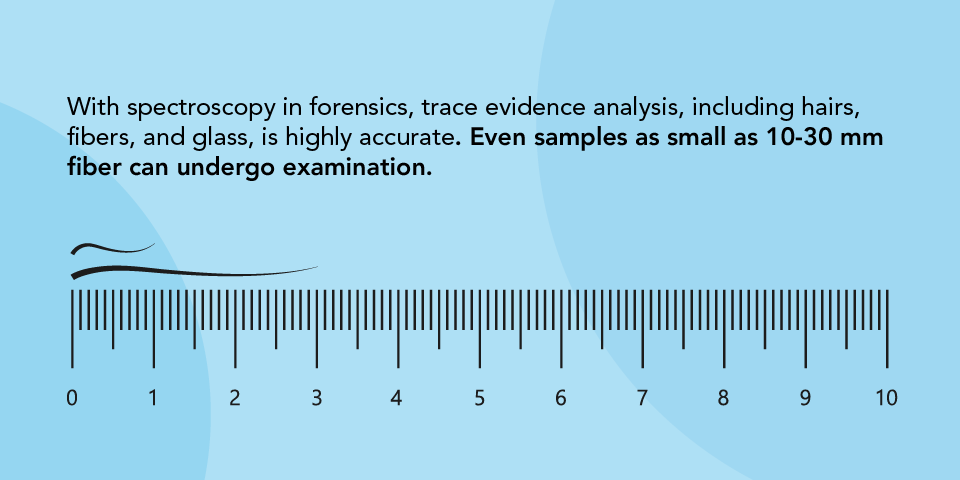
In the current era of forensic science, where crime scene materials are accessible in trace amounts, forensic spectroscopy has functioned as a non-destructive alternative to traditional destructive procedures in crime evidence examination.
Through forensic spectrophotometry, analysts can intensely study crime scene evidence using the power of electromagnetic imaging. Spectrophotometry is the process of scientifically and objectively measuring color and radio wavelengths. It is more dependable than using human eyes and provides reproducible results on an easy-to-understand scale. With spectrophotometry, forensic examiners can distinguish between the chemical composition, material, and even brand of a piece of evidence by examining how the sample reflects wavelengths.
Spectrophotometry is a preferred method of forensic analysis due to its non-destructive analytical abilities. This process is versatile enough to analyze fibers, hairs, and forensic materials such as bodily fluids, drugs, and fingerprints. Spectrophotometers also have the advantage of not requiring sample preparation before analysis.
What Is Spectrophotometry?
Spectrophotometry refers to the process of analyzing samples using electromagnetic waves. Spectrophotometers test how the light refracts and reflects off a particular material and investigate its color, infrared and ultraviolet properties, and more. Using spectrophotometry, you can tell the difference between similar samples of hairs, fibers, drugs, bodily fluids, and fingerprints.
Spectrophotometry works by taking a sample and measuring the intensity of light when a beam passes through it. Since each compound transmits and absorbs light differently, it is possible to identify the true nature of a substance by analyzing this wavelength. Depending on the nature of the sample, it can be studied using a UV-visible or infrared range spectrophotometer.
How Is Spectrophotometry Used to Solve Crimes?
Spectrophotometry is a gold forensic analysis standard used by the FBI and the American Hazardous Material Response Unit. The spectrophotometric process is essential for telling apart two nearly indistinguishable samples. Most forensic analysts use UV/vis spectroscopy in forensic science to examine inks and fibers, and thin-layer chromatography is a complementary method.

With spectroscopy in forensics, trace evidence analysis, including hairs, fibers, and glass, is highly accurate. Even samples as small as 10-30 mm fiber can undergo examination to determine their chemical composition and whether they're natural or synthetic. Forensic ink examinations are a perfect candidate for spectroscopic analysis. Wavelength examination can identify the unique hues in inks found at the scene and whether they're similar to specific brands of storebought pens. Spectrophotometry is a non-destructive and safer alternative for identifying inks compared to chromatography.
Spectroscopy has various applications in forensic science, including:


